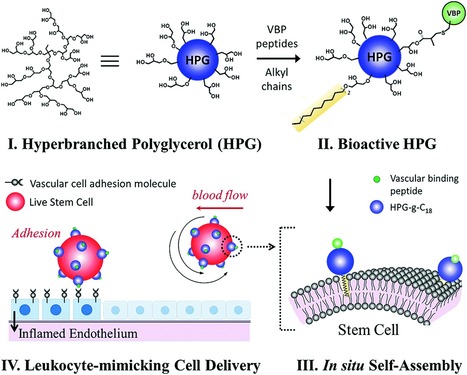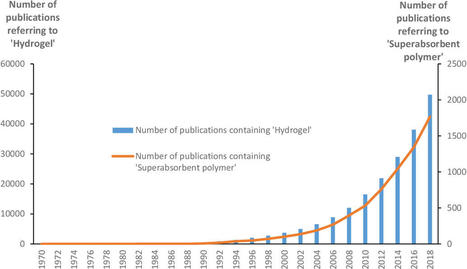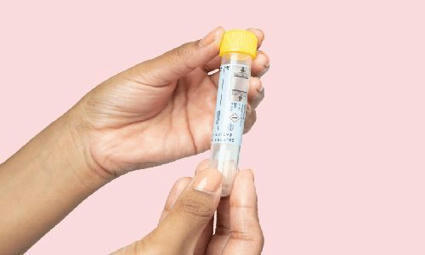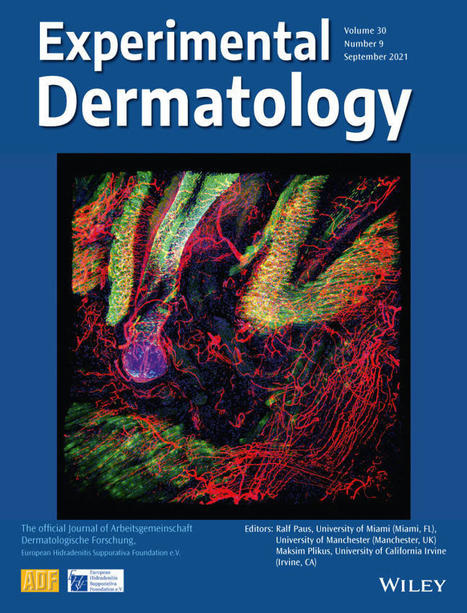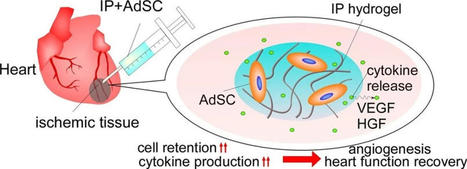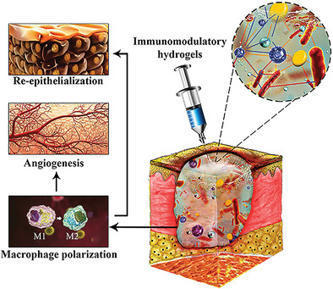 Your new post is loading...

|
Scooped by
Beeyond
November 7, 2021 7:36 AM
|
The adsorption of bovine serum albumin and collagen type I was found to be reduced by as much as 97 and 91%, respectively, in comparison to untreated surfaces. Human glioblastoma and mouse fibroblast attachment was reduced by 99 and 98%, respectively. HPG-grafted substrates outperformed polyethylene glycol (PEG) grafted substrates of comparable thickness under the same incubation conditions. Our results demonstrate the effectiveness of antifouling HPG graft polymer coatings on a selected range of substrate materials and open the door for their use in biomedical applications.

|
Scooped by
Beeyond
November 7, 2021 7:31 AM
|
In the pursuit of dendrimer alternatives, hyperbranched polymers have found increasing interest from academia and industry in a broad range of fields due to their topological and synthetic advantages. Hyperbranched polyglycerol (HPG), as the name implies, is a hyperbranched polymer with about 50–65% dendrimeric structure. Due to its ease in synthesis, globular nature, versatility in terms of functionalization, and superb biocompatibility profiles HPG provides a promising class of materials suitable for numerous applications in nanomedicine and biomedical technologies. The structural features of HPG can be easily tailored by adopting different synthetic methodologies.

|
Scooped by
Beeyond
November 5, 2021 8:50 AM
|
The ability of superabsorbent polymers (SAPs) to absorb and retain a large amount of aqueous solution enables their applications in agriculture, medicine and water treatment. As a result, there were numerous studies reporting the present status and application prospects of raw materials and the mechanism of cross-linking agents. Conversely, there was a lack of research on the factors affecting SAP performance and the summaries of methods to improve performance.

|
Scooped by
Beeyond
November 5, 2021 8:43 AM
|
Superabsorbent polymer (SAP) is a kind of functional macromolecule with super-high water absorption and retention properties, which attracts extensive research and has wide application, especially in the areas of hygiene and agriculture. With reference to the Web of Science database, the SAP research literature from 2000 to 2019 is reviewed both quantitatively and qualitatively. By examining research hotspots, top research clusters, the most influential works, the representative frontier literature, and key emerging research trends, a visual panorama of the continuously and significantly increasing SAP research over the past 2 decades was presented, and issues behind the sharp increase in the literature were discovered.

|
Scooped by
Beeyond
November 5, 2021 8:34 AM
|
Intervertebral disc degeneration (IDD) is caused by genetics, aging, and environmental factors and is one of the leading causes of low back pain. The treatment of IDD presents many challenges. Hydrogels are biomaterials that possess properties similar to those of the natural extracellular matrix and have significant potential in the field of regenerative medicine. Hydrogels with various functional qualities have recently been used to repair and regenerate diseased intervertebral discs.

|
Scooped by
Beeyond
November 5, 2021 8:32 AM
|
“The problem with existing hydrogels is that they can be mechanically weak and so need strengthening,” he said. However, previous methods to toughen them up only work a limited number of times, or sometimes just once. Those gels do not recover rapidly from stresses such as impacts well at all.”

|
Scooped by
Beeyond
November 5, 2021 8:29 AM
|
Polymer gels have unusual properties, including the ability to absorb water in volumes hundreds of times greater than their own. For example, some hydrogels are capable of holding up to two kilograms of water per gram of dry gel. By changing the temperature or adding solvents, various desired properties can be achieved. This is why polymer gels are used in industry and biomedicine, including for the targeted delivery of medication, creation of artificial skin, children's toys, etc.

|
Scooped by
Beeyond
November 5, 2021 8:27 AM
|
Injecting hydrogels containing stem cell or exosome therapeutics directly into the pericardial cavity could offer a less invasive, less costly, and more effective way to treat cardiac injury, according to new research.

|
Scooped by
Beeyond
November 5, 2021 8:25 AM
|
Many features of extracellular matrices, e.g., self-healing, adhesiveness, viscoelasticity, and conductivity, are associated with the intricate networks composed of many different covalent and non-covalent chemical bonds. Whereas a reductionism approach would have the limitation to fully recapitulate various biological properties with simple chemical structures, mimicking such sophisticated networks by incorporating many different functional groups in a macromolecular system is synthetically challenging. Herein, we propose a strategy of convergent synthesis of complex polymer networks to produce biomimetic electroconductive liquid metal hydrogels.

|
Scooped by
Beeyond
November 5, 2021 8:24 AM
|
Hydrogels are three-dimensional networks of crosslinked polymers. However, current hydrogel wound dressings are made up of synthetic polymers that are biologically inert and do not drive hosts' biology toward wound healing. Such treatment modality is particularly paradoxical for severe wounds where exogeneous mediators are critical for regeneration. Recently, the incorporation of stem cells has been proposed to confer inert dressings with biologic properties. The cells possess the ability to release paracrine wound-healing factors and differentiate into multiple skin cell types to replace lost tissues. In order to replicate aspects of the stem cells' native extracellular matrix (ECM) environment, researchers are turning to natural polymers that are more cytocompatible.

|
Scooped by
Beeyond
November 5, 2021 8:22 AM
|
Hydrogels are polymer materials made mostly from water. They can be used in a wide range of medical and other applications. However, previous incarnations of the materials suffered from repeated mechanical stress and would easily become deformed. A novel crystal that can reversibly form and deform, allows hydrogels to rapidly recover from mechanical stress. This opens up the use of such biocompatible materials in the field of artificial joints and ligaments.

|
Scooped by
Beeyond
November 5, 2021 8:21 AM
|
The final product is not a gel like jam or a hair gel. Rather, these hydrogels are synthesized in the form of thin foil sheets. The sheets can be shaped with scissors or a knife, then placed on the surface one wishes to clean. (The gel adheres easily even to vertical surfaces like walls.) Leave a sheet for a few minutes—not too long—and then just peel it off. The over-paint will be softened and swollen, and it can be easily removed by gentle mechanical action. Should you accidentally leave the gel on too long, Michele Baglioni advised just letting it dry as the solvents and water evaporate, being careful not to try to wipe anything away. This should avoid any harm to the underlying painting.

|
Scooped by
Beeyond
November 5, 2021 8:18 AM
|
3D-printing tough conductive hydrogels (TCHs) with complex structures is still a challenging task in related fields due to their inherent contrasting multinetworks, uncontrollable and slow polymerization of conductive components. Here we report an orthogonal photochemistry-assisted printing (OPAP) strategy to make 3D TCHs in one-pot via the combination of rational visible-light-chemistry design and reliable extrusion printing technique. This orthogonal chemistry is rapid, controllable, and simultaneously achieve the photopolymerization of EDOT and phenol-coupling reaction, leading to the construction of tough hydrogels in a short time (tgel ~30 s).
|

|
Scooped by
Beeyond
November 7, 2021 7:33 AM
|
Hyperbranched PG possesses a compact molecular structure and high biocompatibility in analogy to the established linear poly(ethylene glycol), can be employed to generate complex polymer architectures, and is therefore an important material for a variety of biomedical applications.

|
Scooped by
Beeyond
November 7, 2021 7:24 AM
|
Hyperbranched polyglycerols (HPGs) and their derivatives are widely regarded as promising biomaterials in a variety of diagnostic and therapeutic applications through solubilization, microencapsulation or conjugation with diagnostic agents, drugs, genetic materials, proteins, peptides, etc. HPGs have good chemical stability, inertness under biological conditions, water-solubility with low viscosity and multi-functionalization, which prompt their application as ideal or interesting nanocarriers or modifying agents.

|
Scooped by
Beeyond
November 5, 2021 8:48 AM
|
The current review provides an overview of different types of superabsorbent polymers (SAPs) together with appropriate strategies elaborated to enable their synthesis. The main focus will be on polysaccharide-based, semi-synthetic and 'smart' SAPs along with their derivatives. SAPs have already shown their use in a plethora of applications including diapers, the biomedical field, agriculture, etc. The different polymer classification possibilities are discussed, as well as the classification of the constituting building blocks. The main part of SAPs still has a synthetic origin. However, as they are often not biocompatible, biodegradable or renewable, natural SAPs based on polysaccharides have gained increasing interest.

|
Scooped by
Beeyond
November 5, 2021 8:34 AM
|
Hydrogels have existed for more than half a century, and today they have many applications in various processes ranging from industrial to biological. There are numerous original papers, reviews, and monographs focused on the synthesis, properties, and applications of hydrogels. This chapter covers the fundamental aspects and several applications of hydrogels based on the old and the most recent publications in this field.

|
Scooped by
Beeyond
November 5, 2021 8:33 AM
|
Although superficial wounds are often easy to treat for healthy individuals, there are some more severe types of wounds (burns, ulcers, diabetic wounds, etc.) that are a challenge for clinicians. A good therapeutic result is based on the delivery of a treatment at the right time, for the right patient. Our goal was to sum up useful knowledge regarding wound healing and wound treatments, based on creams and hydrogels with various active ingredients. We concluded that both preparations have application in preventing infections and promoting healing, but their efficacy is clearly conditioned by the type, depth, severity of the wound and patient profile.

|
Scooped by
Beeyond
November 5, 2021 8:30 AM
|
This work builds on the team's previous research with hydrogel scaffolds, which create a structure to support tissue growth, accelerating wound healing. In their new study, the team showed that a modified version of this hydrogel activates a regenerative immune response, which can potentially help heal skin injuries like burns, cuts, diabetic ulcers and other wounds that normally heal with significant scars that are more susceptible to reinjury.

|
Scooped by
Beeyond
November 5, 2021 8:28 AM
|
Researchers have developed a new method of injecting healthy cells into damaged eyes. The technique could point the way toward new treatments with the potential to reverse forms of vision loss that are currently incurable.

|
Scooped by
Beeyond
November 5, 2021 8:26 AM
|
Heart muscle becomes damaged and cardiac function is affected when blood vessels feeding the heart are blocked. A new stem-cell-carrying hydrogel helps mice recover from this condition, called myocardial infarction, by stimulating formation of new blood vessels. Developed by a team of scientists at Kansai University in Japan, the stem cell delivery system is described in the journal Science and Technology of Advanced Materials.

|
Scooped by
Beeyond
November 5, 2021 8:25 AM
|
“Adhesion of soft materials, especially hydrogels, greatly attracted our research interests, because the state-of-the-art adhesion of hydrogels was fairly weak and often led to failures,” Zhao says. “In 2015, we proposed the first general strategy to achieve tough adhesion for diverse hydrogels and other materials.”
Like humans, hydrogels are made out of polymers and water. The similarities in mechanical and electrical properties make biological tissue and hydrogels compatible, opening up a world of biomedical applications. Now, Zhao and Yuk could further integrate hydrogels within various materials, devices, and even the human body with unprecedented robustness.

|
Scooped by
Beeyond
November 5, 2021 8:23 AM
|
The researchers found strong correlation between the stiffness of hydrogels, which mimic intestinal mucus, and how well a diarrhea-causing strain of E. coli adhered to and aggregated atop the epithelial cells that normally line the intestines. They reported that softer hydrogels promoted "significantly greater bacterial adhesion," which they attribute to mucus and other extracellular matrix components expressed by the cells.

|
Scooped by
Beeyond
November 5, 2021 8:21 AM
|
Instead of synthetic or biologic materials commonly used for these types of injuries, a team led by Robert Mauck, director of the McKay Lab and a professor of orthopedic surgery and bioengineering, has used a combination of a magnetic liquid and three-dimensional hydrogel solution which could conform to the particular nuances of an injury within the body.

|
Scooped by
Beeyond
November 5, 2021 8:20 AM
|
With all the advances in tissue engineering for construction of fully functional skin tissue, complete regeneration of chronic wounds is still challenging. Since immune reaction to the tissue damage is critical in regulating both the quality and duration of chronic wound healing cascade, strategies to modulate the immune system are of importance. Generally, in response to an injury, macrophages switch from pro-inflammatory to an anti-inflammatory phenotype. Therefore, controlling macrophages’ polarization has become an appealing approach in regenerative medicine. Recently, hydrogels-based constructs, incorporated with various cellular and molecular signals, have been developed and utilized to adjust immune cell functions in various stages of wound healing.
|
 Your new post is loading...
Your new post is loading...


















